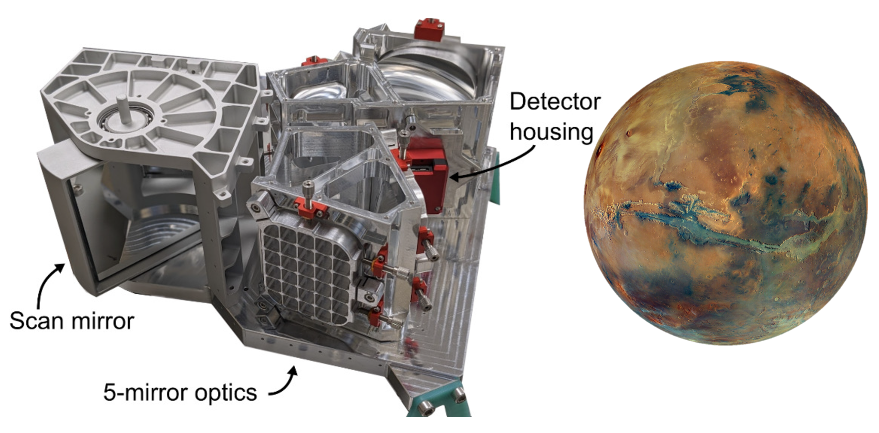Broadband Exploration with Bolometric Optics
The European Space Agency (ESA) has announced the preliminary payload selection for its next Mars mission, which includes BEBOP (Broadband Exploration with Bolometric Optics), led by the University of Oxford.
Developed by the Physics Departments of Oxford and Durham universities, BEBOP is a thermal imaging system designed to provide accurate Martian weather forecasts, improving the safety of robotic and future human explorers. The camera builds on technology from the Lunar Thermal Mapper, launched earlier this year on NASA’s Lunar Trailblazer, and shares design heritage with MIRMIS, under construction for ESA’s Comet Interceptor mission (launch planned for 2029). The freeform optics for all three instruments were produced at Durham’s Centre for Advanced Instrumentation.
BEBOP will measure the temperature of Mars’s surface and atmosphere and track airborne dust across nearly the entire planet, with kilometre-scale resolution. These data will help scientists understand how dust storms form and evolve - a key challenge for predicting Martian weather. Early optical development was supported by the UK’s Centre for Earth Observation and Instrumentation (CEOI).
The instrument will fly on ESA’s LightShip, an interplanetary tug that will deliver its payload spacecraft, SpotLight, into low Mars orbit before entering a higher, stationary orbit. Two follow-up LightShip missions are planned, providing three BEBOP cameras in orbit for continuous monitoring of Mars.
The first LightShip mission, carrying SpotLight, is targeting a 2032 launch. BEBOP joins three other instruments on board: MADNESS, DESI, and METEORCAM.
More on ESA’s LightShip missions



/prod01/prodbucket01/media/durham-university/departments-/physics/cfai/CfAI-Webpage-Banner-smaller.jpg)